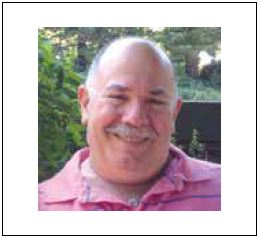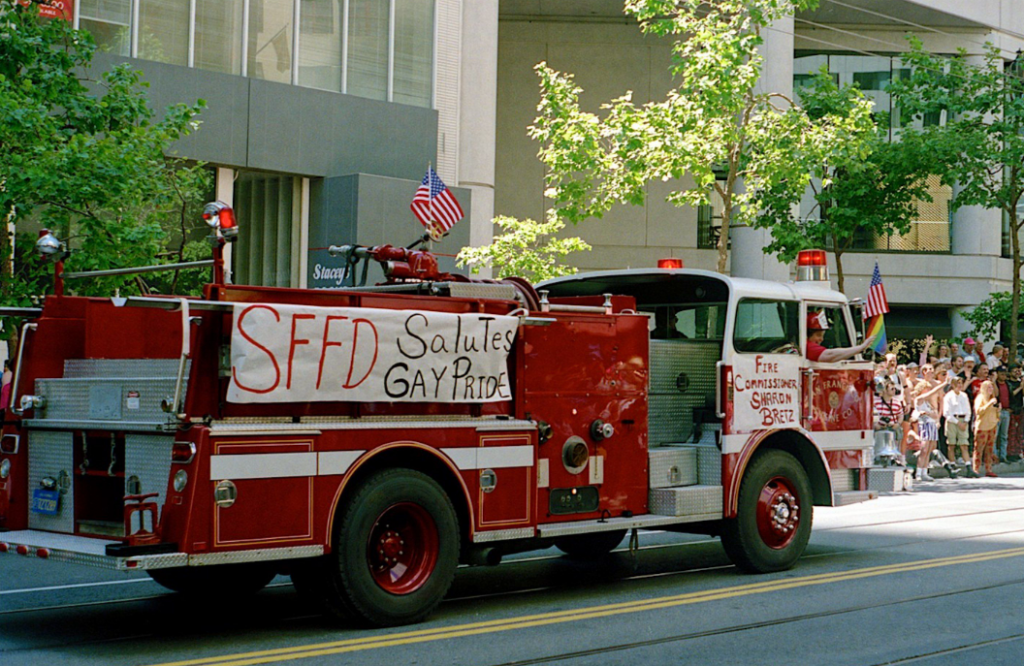
By Dr. Bill Lipsky–
Ask any longtime San Franciscan who was the city’s first woman firefighter and odds are they will tell you that was Lillie Hitchcock Coit, who adored “the red shirt and warlike helmet of the firemen” and “gloried in the excitement of a big blaze.” She became an honorary member of Knickerbocker 5, a volunteer fire brigade, in 1863, three years before the city had a paid fire department, which then consisted of six steam fire engine companies, two hook-and-ladder companies, and three hose companies, staffed entirely by men.
The department and its reputation for excellence grew over the next hundred years, but it did not hire its first Black fireman until 1955 or any women firefighters until 1987, after a federal court order demanded it. One of the very first was Anne Young, who also was the first openly lesbian (and first openly LGBT person) hired for the job in the history of the San Francisco Fire Department (SFFD). “I want to dispel some myths about women,” Young said of her appointment, but “I don’t consider myself a pioneer.” She was, however, in every way.

Born in Phoenix, Arizona, in 1961, Young grew up in San Francisco. “I knew at six years old that I was different,” she told Shanna Farrell in an interview for the California Fire Departments Oral History Project in 2016. “I could not play the part of a little girl,” she said. “I wanted to have jeans, I wanted to have Pendleton shirts, I wanted to have a jeans jacket, I wanted to have a certain type of hat. I’ve worn hats all my life.”
She was determined to be her own self. “I had a look and I perfected it, and I felt comfortable with that look, no matter how much teasing I got. It didn’t matter; I felt good in that uniform. That’s exactly what it was. I was drawn to uniforms, dressing a certain way in order to feel like I was me. If I couldn’t be something else, I was going to be fully me.”



After graduating from high school, Young was unsure what to do next until her brother Steve, a San Francisco fireman, encouraged her to follow in his footsteps. She took a job as a janitor for the city’s public libraries to support herself, which she kept for six years, while earning her degree in fire science at SF City College. Her studies completed, she also worked for an ambulance company. Meanwhile, she applied for firefighting appointments all across Northern California, determined to become a firefighter like her brother.
Young’s determination and perseverance were finally rewarded in 1986 when she was hired to be one of Daly City’s first two women firefighters. Fourteen months later, she joined the SFFD, confident that she was prepared for the arduous training she would receive during her probation. “I had a leg up. I’d already been in a firehouse. I’d slid down a pole, I knew how to wake up in the middle of the night, get my gear on. I was happy in that moment.”

Of course, “The guys did kid with me. I was never looking for problems. I was never trying to find something. I was there to fit in and do a job. And because you can do a lot more work at a busy house, you don’t have time to sit around and think about things. But the guys were constantly sussing me out.” When she proved her ability “the first time we went to a fire,” however, “they came up and pinched my arms.”
Still on probation, Young became determined that the fire department participate in 1988’s Pride Parade, which would be a first for the organization. Although many people she spoke with “tried every which way they could to get out of it,” she was supported by Sharon Bretz, the first openly lesbian and possibly the first female fire commissioner in San Francisco history; Bob Demmons, who later became Chief of the Department; and the Black Firefighters Association (they were both members).
Young herself drove a fire truck in the parade, with a hand-painted sign taped to it. Only she, Bretz, the other women firefighters, and straight members of the Black Firefighters Association, included Demmons, participated. No one else from the department was there. She was overwhelmed with the response from the huge crowd who greeted them: “I felt such a sense of pride in my job,” she said afterward, but not everyone she worked with was pleased.
The next year, Young became the first openly lesbian—and the first woman—firefighter in San Francisco history to be promoted to lieutenant. Although “her promotion has nothing to do with her sexual preference or gender,” Commissioner Bretz told reporters, “this will be a symbol for other women to look to and realize this is no longer a dream, but a reality … . I think every time you see a gay person promoted, it helps to remove stigma.”
Young was more than aware of the significance and the burden of her new responsibility. “It’s a lot to take on, and it’s a very important job,” she admitted, “but I feel really good about it.” She clearly understood the challenges she faced. “I’m not going to say I didn’t encounter hostility and apprehension from some of the men, but I realized that was a cultural hang-up, and for the most part they acted professionally with me.” Many, however, did not.
The enmity she experienced as a firefighter became much worse after her promotion. “When I was a firefighter, I got to do things all the time that were fabulous. Once I [was] promoted to lieutenant, there was very little that made me happy. My quality of life and my sense of purpose dropped way off. I couldn’t bond with anybody, because I was sent to a different firehouse every shift that I worked … . I knew the ones that were most hostile to me.”
Eventually, Young decided to do something about the ongoing animosity toward her. Claiming that she was “forced to endure constant harassment, including lack of support on firelines, obscene phone calls, slashed tires, and threats of physical violence,” she sued the department for discrimination and retaliation. So important was her case that even long-time San Francisco Chronicle columnist Herb Caen, who later received a special Pulitzer Prize for “his extraordinary and continuing contribution as a voice and conscience of his city,” took notice in his July 7, 1994 musings.
“Fire Dept. Lt. Anne Young,” he wrote in his usual gossipy style, “has filed a 10-count suit against the city, claiming she has been harassed in almost every firehouse in the city. This goes on trial July 18 and many a hook’n’ laddie is looking nervous … . On the other hand, Lt. Young is a vegetarian and some of the guys complain that when it was her turn to cook in the firehouse, all she’d serve was veggies, no matter how they howled for red meat.”
Chauvinism aside, the case was no laughing matter, however. On July 25, 1995, a San Francisco jury awarded her $300,000 and attorney costs. Young resigned from the department, took time off for herself, then moved to Portland where she worked with the Metropolitan Alliance for the Common Good, “an association of faith, labor, health education, and community organizations.” Bretz continued as a fire commissioner until 1991, then served on the Parking and Traffic Commission until 1996, championing measures to make city streets safer for bicyclists.
Bill Lipsky, Ph.D., author of “LGBTQ+ Trailblazers of San Francisco” (2023) and “Gay and Lesbian San Francisco” (2006), is a member of the Rainbow Honor Walk board of directors.
Faces from Our LGBT Past
Published on August 22, 2024
Recent Comments